Different organisms have evolved to observe the world in various ways, with eye structures optimized for diverse modes of existence.
>> The Most Extraordinary Eyes of Animals (I)
Stalk-Eyed Flies
This small yet peculiar creature is primarily found in tropical forests in Southeast Asia, Africa, and a few locations in Europe and North America. Their name is derived from their elongated stalks protruding from either side of their heads, with eyes and antennae at the ends. Male stalk-eyed flies typically have much longer eye stalks than females, and biologists have determined that females prefer males with longer eye stalks.
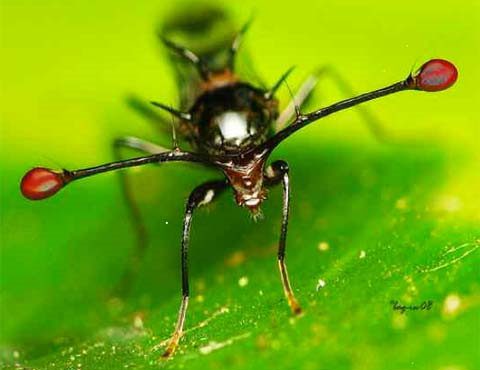
During the mating season, males often face off and compare the lengths of their eye stalks. The male with the longest “eye span” is recognized as the winner. Male flies also possess an extraordinary ability to enlarge their eye stalks by swallowing air through their mouths and blowing it into tubes leading to the stalks. They primarily do this during mating season.
Spookfish
Spookfish is a deep-sea fish with a ghostly appearance and has one of the most unusual eye structures known to science. Each eye has a bulging part called a “pouch,” separated from the main part of the eye by a partition. While the main part of the eye has a lens functioning similarly to those of other animals, the “pouch” contains a curved mirror made of multiple layers of guanine crystals. This “mirror” collects light more effectively than regular eyes. The “pouch” reflects light and focuses it onto the retina, allowing spookfish to observe both above and below at the same time.
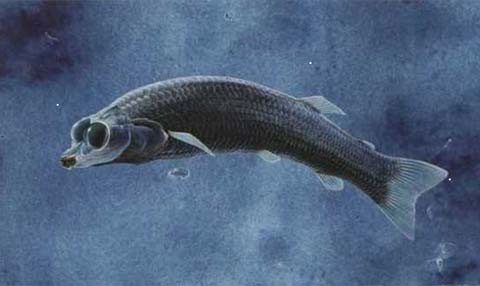
Spookfish are the only vertebrates that use a mirror eye structure instead of conventional lenses. This species is distributed worldwide, but they are rarely seen because they spend most of their lives at depths of 1,000 to 2,000 meters. Spookfish feed on small crustaceans and plankton, with an average length of about 18 cm.
Devil’s Face Spider
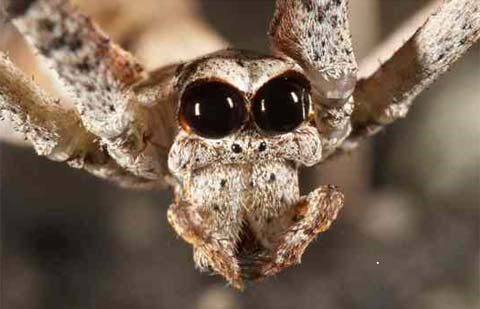
Spiders are commonly known for having multiple eyes (though this varies greatly among species, with some having 2 or 4 eyes while others have up to 6 or 8). The devil’s face spider possesses 6 eyes but appears to have only 2 due to the middle pair being much larger than the other two pairs. This adaptation aids their nocturnal lifestyle. The devil’s face spider is endowed with excellent night vision, not only because of its large eyes but also due to an extremely light-sensitive layer of cells covering them. This layer is so sensitive that it deteriorates at dawn, and a new one is formed each night. The eyes of the devil’s face spider are considered extraordinary because they have perfect night vision despite lacking a tapetum lucidum—a reflective layer that helps other spiders (and predators like cats) see in low-light conditions. Scientists believe that the devil’s face spider has better night vision than cats, sharks, and owls, which can see in the dark up to 100 times better than humans.
Mantis Shrimp
Many consider mantis shrimp to possess the most bizarre and astonishing eyes in the world. Mantis shrimp are not actually shrimp but belong to a different class of crustaceans known as Stomatopoda. Famous for their aggression and formidable weaponry (mantis shrimp have incredibly sharp claws capable of slicing a human finger in half or even shattering a glass aquarium in a single strike), these creatures are voracious predators primarily found in tropical waters.
Like dragonflies, mantis shrimp have compound eyes, although they have fewer ommatidia units (about 10,000 per eye). However, in mantis shrimp, each row of ommatidia has a distinct function. For example, some are used to detect light, while others are used for color recognition. Mantis shrimp have a much greater ability to perceive colors than humans.
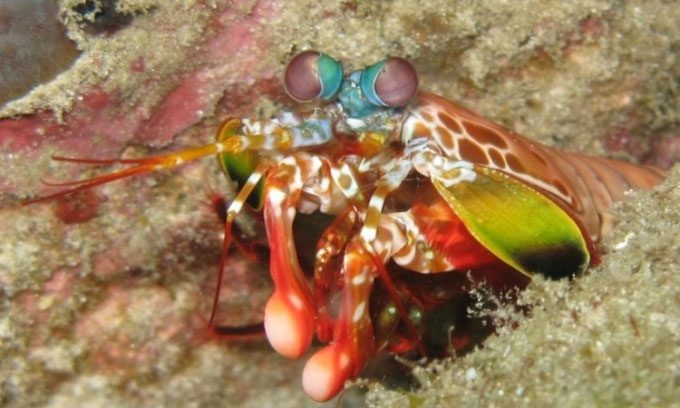
The eyes of the peacock mantis shrimp (Odontodactylus scyllarus). (Image: Flickr).
The eyes of mantis shrimp are located at the end of their bodies and can move independently of each other, rotating up to 70 degrees. Another interesting point is that the visual information is processed by the eyes themselves rather than their brains. Even more bizarre, each eye of the mantis shrimp is divided into three parts, allowing this creature to see objects through three distinct sections of the same eye. This means that if one eye is lost, the remaining eye can still assess depth and distance just as effectively as a human with both eyes.
Humans have 4 photoreceptive organs, but mantis shrimp possess up to 16 photoreceptive organs within their compound eyes. They have both regular color-sensitive photoreceptors and photoreceptors sensitive to ultraviolet light. They can see 5 different wavelengths of ultraviolet light.
Additionally, mantis shrimp can perceive polarized light. Many animals can see straight polarized light, including squid. Mantis shrimp are the only creatures capable of seeing curved polarized light. Each eye is mounted on a long stalk and can move independently, allowing for depth perception. Humans rely on two eyes for depth perception, while mantis shrimp only need one. They can even detect cancer before symptoms appear.
Trilobites
Trilobites are among the most successful animal groups in history, thriving for nearly 300 million years before dinosaurs appeared on Earth. Although some species within this class lack eyes, the majority possess compound eyes similar to those of insects. The peculiar aspect of trilobite eyes is that their lenses are made from inorganic calcite crystals, a mineral that is also a primary component of limestone and chalk. In its purest form, calcite is quite transparent, making it suitable as a material for eye lenses.
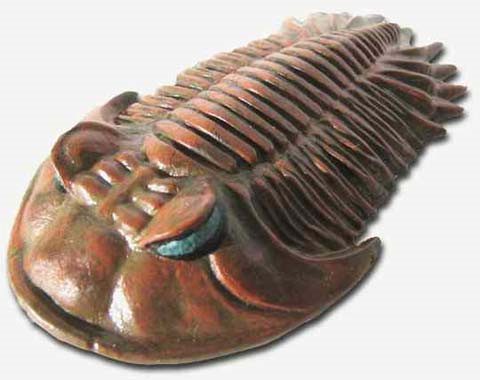
These crystalline eyes are unique to trilobites because the compound eyes of modern invertebrates are formed from chitin—a type of organic matter. Due to their unusual composition, trilobite eyes are quite rigid and cannot adjust to focus. Instead, trilobites adjust focus using an internal eye mechanism, which not only addresses any potential issues caused by the mineral lenses but also provides them with excellent vision, enabling them to observe objects both near and far simultaneously.
Moreover, some trilobite species possess eyes that look truly bizarre. Some have eyes located at the ends of long stalks, similar to stalk-eyed flies, while others have “eyelids” above their eyes to protect them from harsh sunlight. Made from calcite, the fossilized eyes of trilobites are easily preserved, allowing us to learn more about their eye structure and vision than we can from any other prehistoric creatures.
Goats
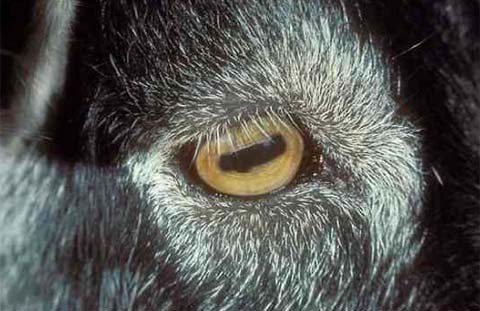
We often imagine that pupils are round in shape. However, the eyes of goats and most other hoofed animals contain horizontal slits that nearly become rectangular when dilated. This feature gives goats a panoramic vision of 320 to 340 degrees, meaning they can see almost everything around them without moving (humans have a field of view of 160 to 210 degrees). Therefore, animals with rectangular pupils can see better at night due to their larger pupils, which can constrict more tightly during the day to limit light. Interestingly, octopuses also have rectangular pupils.


















































